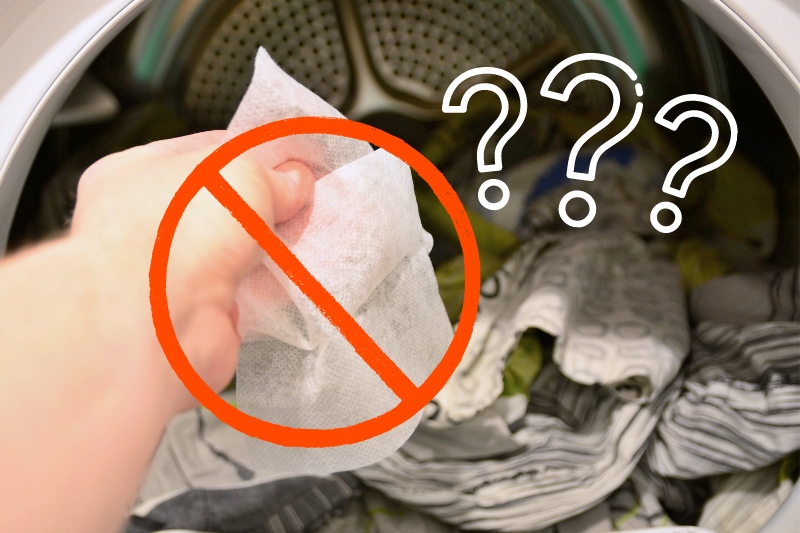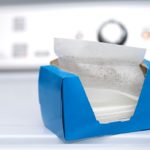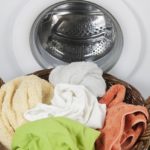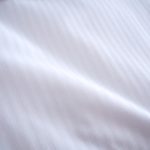Dryer sheets get thrown inside a tumble dryer, and their purpose is to soften laundry, reduce static, smooth our wrinkles, and of course, scent items.
They’re generally pretty straightforward to use and don’t require much effort. However, they do have a few downsides.
Dryer sheets are a one-time-use kind of product, so they can be expensive to buy regularly. They can sometimes leave a waxy, filmy coating on garments in the dryer, and they don’t always have the effects you’d want. For example, laundry might not be as aromatic or as static-free as you’d like.
So, what can you use instead of dryer sheets? There’s got to be an alternative out there that is greener, cheaper, and more durable, surely?
Below you’ll find several alternatives to using dryer sheets in the tumble dryer! There are plenty of options to choose from, so work through each alternative until you find the one or two that resonate with you.
1. Plastic Dryer Balls
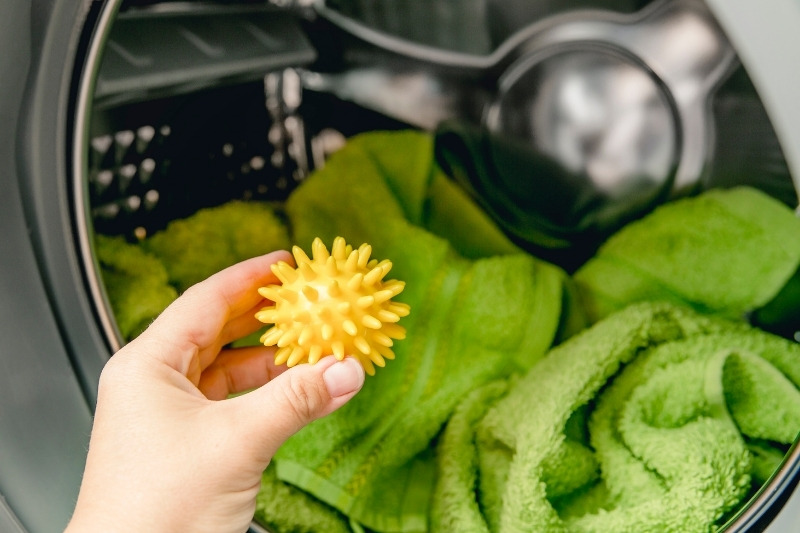
Plastic dryer balls are a great alternative to dryer sheets because they’re durable (mostly made of plastic), long-lasting, come in different shapes that aid the drying and un-wrinkling processes, are usually cheaper to buy, and can be vegan-friendly.
They’re also super easy to use. You just pop a few dryer balls into the tumble dryer alongside your laundry and start the cycle.
If you want to make your laundry extra pungent, you can coat the balls in a few drops of essential oil beforehand, leave them to dry, and then add them to the machine.
The most common type comes with spikes and is shaped like a ball, hence the name!
The spikey edges help to separate the laundry up, and in turn, you should notice that your clothes are dried more evenly and aren’t clumped together.
The only significant drawbacks of using dryer balls instead of dryer sheets are that they’re not always biodegradable, and they sometimes make a noise when they move around in the machine. However, the noise isn’t too overbearing, and you get used to it.
2. Wool Dryer Balls

If plastic dryer balls aren’t for you, you can pick up a woollen version of them.
Wool dryer balls are an alternative to plastic dryer balls, but they do have some things in common with them. These include reducing static on items of clothing, being odourless, and being durable and reusable.
Wool dryer balls differ from plastic dryer balls because they’re a natural alternative, and they make very little noise when agitated inside a dryer.
But perhaps the biggest difference is that because they’re made from wool, they can absorb some of the moisture from the laundry as they spin around the drum, which can help to speed up the drying process for you.
The main concerns surrounding using woollen dryer balls instead of dryer sheets are that they sometimes leave tiny fibres on outfits, they usually cost more to buy, and because they’re made of wool, they’re not vegan-friendly.
3. Tennis Balls
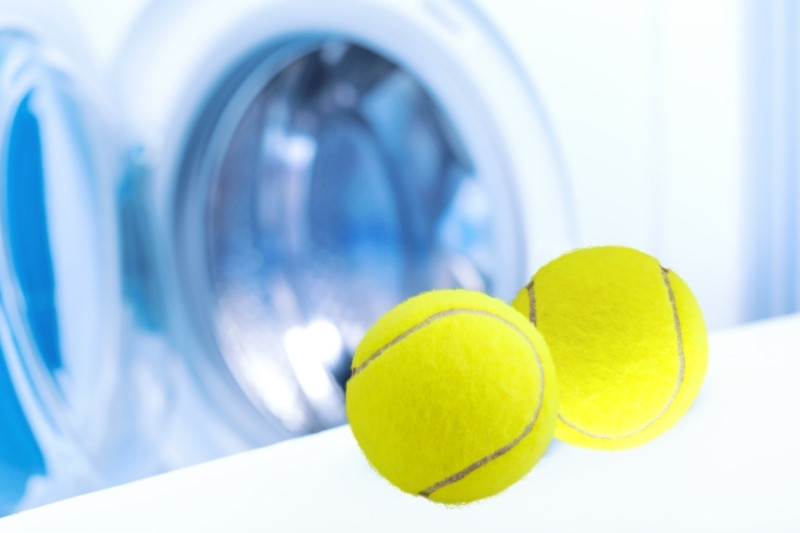
Tennis balls can also be used instead of dryer sheets in a dryer!
In fact, tennis balls work in a similar way to regular dryer balls. They help to agitate and separate items in the dryer, and in doing so, they can encourage even drying and fewer wrinkles.
Tennis balls can also be scented with essential oils before going into the appliance, and as they turn around, they can transfer this scent onto the laundry. And like regular dryer balls, tennis balls are reusable and fairly durable.
The main issue with using tennis balls as an alternative to regular dryer sheets is that they can coat your clothes with that tennis ball smell.
The rubbery odour can find its way onto your items quickly, and although it wears off, it’s not all that pleasant. The aroma tends to get more intense as you add more balls to the machine too!
In addition to this, you’ve got to make sure that the dye on the tennis ball doesn’t rub onto your clothes.
4. DIY Dryer Sheet Alternatives
If you’re sitting at home thinking, “Will anything else work as a dryer sheet?” You can quit thinking right now and start taking action because you can actually make your own version of a dryer sheet! (Plus, it’s much easier than you think to do it!)
So, how do you make dryer sheets at home? You’ve got a few different options to consider. Here’s what you can do:
Option 1: Cloth with essential oils
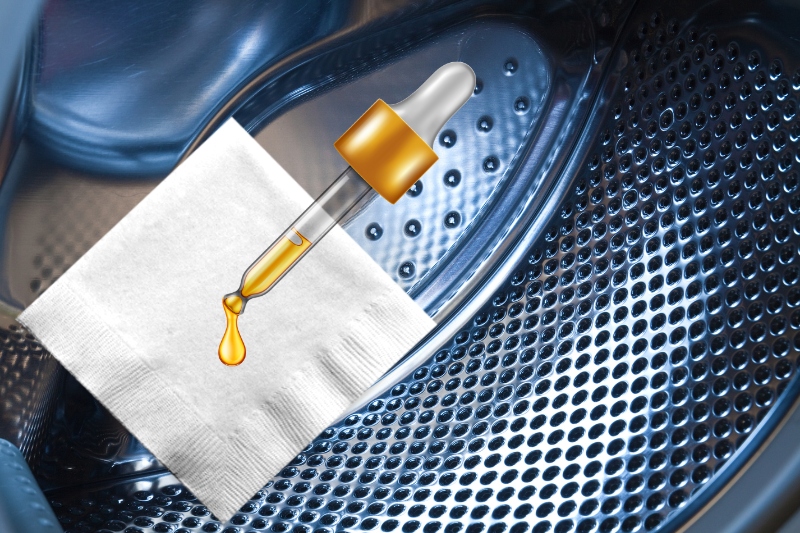
Pop a clean cloth/scrap of fabric (must be neutral-coloured) inside a sealed jar and add a few drops of essential oil to the material.
Leave the jar sealed for a while. When the essential oil has dried into the cloth (so it won’t stain your clothes), pop the cloth inside the tumble dryer alongside your laundry and run a cycle.
If you don’t have a cloth at hand, grab an old, neutral-coloured t-shirt and cut it into pieces and use them instead.
You can also try this method out using white vinegar.
Note: Make sure you don’t saturate the cloth with liquid. And make sure you choose essential oils that won’t stain your laundry.
Option 2: Cloth with white vinegar
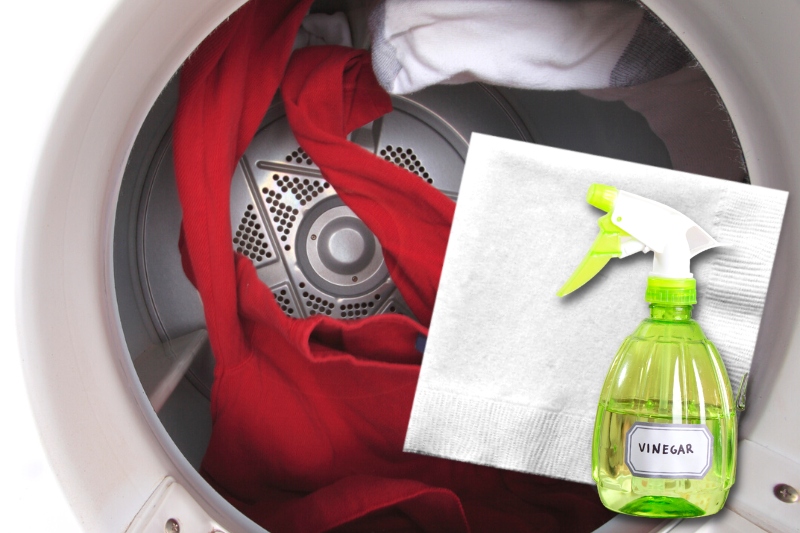
If sealing a cloth in a jar isn’t for you, you could pop some white vinegar in a spray bottle and spray an old, clean cloth with the liquid.
As mentioned above, you’d have to leave the liquid to dry on the cloth before placing it inside a tumble dryer alongside your laundry.
You could also spray a cloth with some essential oil scents and throw the cloth into the dryer when it’s dry. You’d end up with the same sort of effect, minus the vinegar smell!
Option 3: Sponges
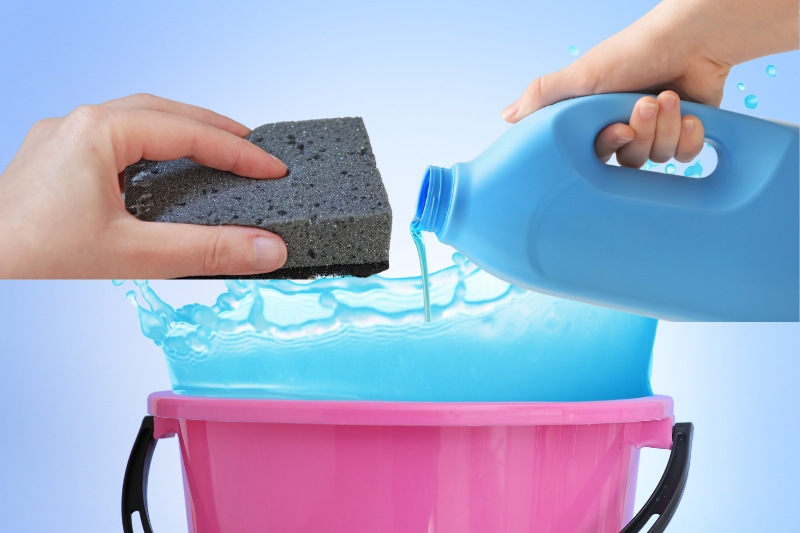
If you’re looking for something a little different, you could fill a plastic tub with fabric softener and water, and then soak two very absorbent, neutral-coloured sponges in it.
You’d have to leave the sealed container for a few minutes while the scents get absorbed. But when you’re ready to use one of the sponges, you just wring all the moisture and liquid out of it and add it directly into your dryer with your laundry.
The sponge must not be saturated in fabric softener and water.
Option 4: Towel
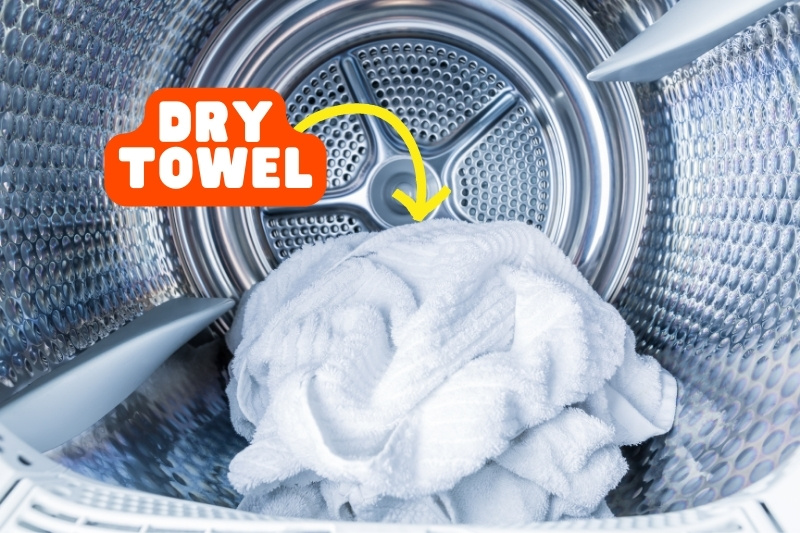
In addition to the above, you could throw a dry, neutral-coloured towel into your dryer alongside your laundry.
Doing this will help to remove excess moisture from the pile of washing, can reduce static, and can sometimes help to soften items inside the machine.
5. Line-Dry Laundry Instead of Using the Dryer
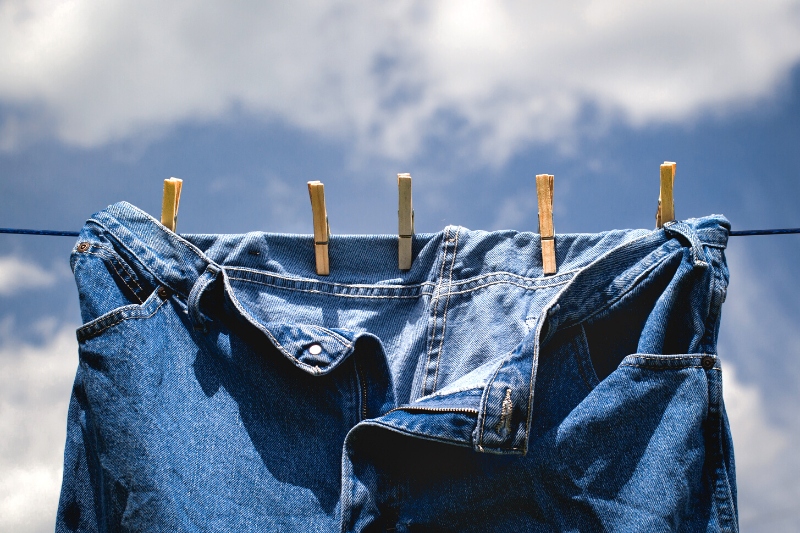
If you’re looking for a natural alternative that doesn’t require much input from you or other products, you could peg your clothes out on a washing line and let nature do its thing!
Line-drying laundry can help to significantly reduce static cling and wrinkles on your laundry, and it’s also a cheap way of drying clothes.
Pegging clothes outside also means they get to blow about in the wind, odours get removed from them, and laundry isn’t subjected to the harsh drying motion of the tumble dryer.
This can protect the longevity and quality of the pieces of clothing and can protect them from chemicals found in dryer sheets.
6. Kitchen Foil

Interestingly, aluminium foil, the same stuff you use to cover dishes in the oven, can be used inside a dryer.
All you need to do is scrunch up several bits of tin foil into small balls, approximately 7-8cm in diameter (like a regular dryer ball), and pop them inside the dryer alongside your laundry.
The aluminium balls will act in a similar way to ordinary dryer balls and will be able to agitate your laundry for you. But more than anything, the foil balls will help to reduce a lot of static cling inside the machine! They’re also reusable and cheap!
All you need to do is make sure that you tuck all the sharp edges in so they don’t snag any material beforehand.
Of course, aluminium foil balls won’t help to freshen your laundry because the balls won’t be scented, and there may be some noise to contend with. But if you can manage these two points, tin foil makes a great alternative to dryer sheets.
7. Ice Cubes
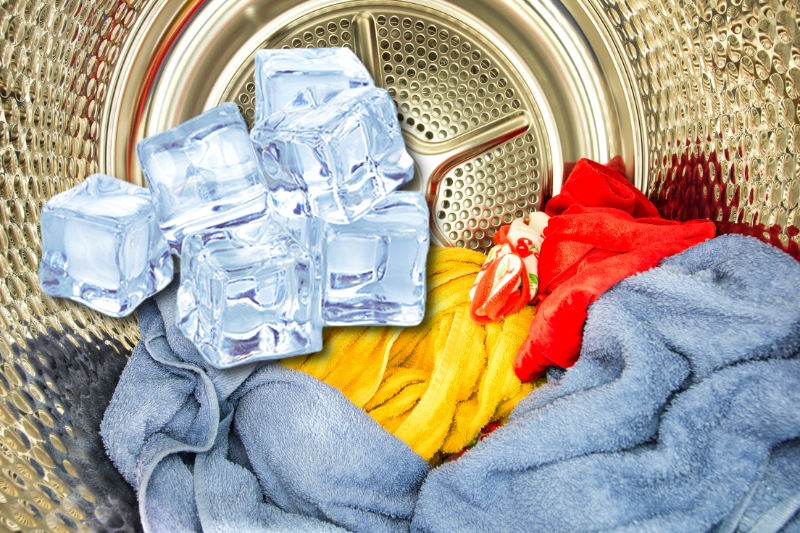
If you need to manage a load of wrinkly laundry but don’t fancy using dryer sheets, you could opt for some ice instead!
All you need to do is add a few ice cubes to the drum, and as they melt inside the dryer’s drum, they will release steam. This steam will then loosen some of the creases found in the laundry.
Of course, ice alone isn’t going to sort out all of your tumble dryer woes, like the cubes won’t remove static cling or scent your outfits. But this method is a backup option you can try out if you’re in a pinch.
8. Bicarbonate of Soda or White Vinegar in the Wash Cycle
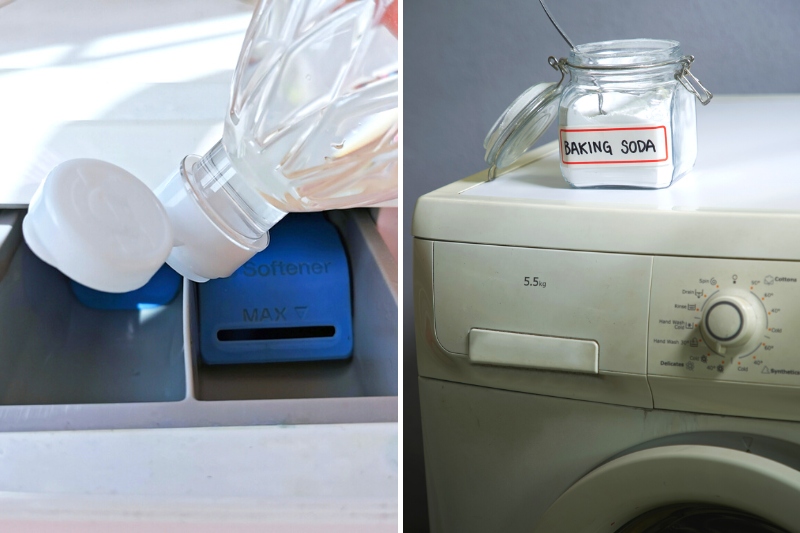
Dryer sheets and the alternatives mentioned above aren’t for everyone. So, if you’re looking for a quick way to solve your washing worries, check out the methods below.
Adding chemicals or products to a dryer can help to soften clothes, remove static cling, neutralise odours and reduce wrinkles. But you can also add a product or two to your wash cycle to help you with these issues!
If you add a teaspoon of bicarbonate of soda (baking soda) to the wash cycle when you clean your clothes, they will feel softer to the touch, and foul odours will be removed from the material at the end of the wash.
Similarly, by adding a quarter to half a cup of white vinegar to the wash cycle as your items are being laundered, you will notice that your laundry is smoother, less lint-filled, and odour-free by the end of the washing process.
As a result of completing one of the actions (bicarb or vinegar, not both at once) above, you won’t need to use a dryer sheet, or a similar product, when drying your laundry in a tumble dryer. As a result, you should save some money and time!

Bethan has a passion for exploring, reading, cooking and gardening! When she’s not creating culinary delights for her family, she’s concocting potions to keep her house clean!
